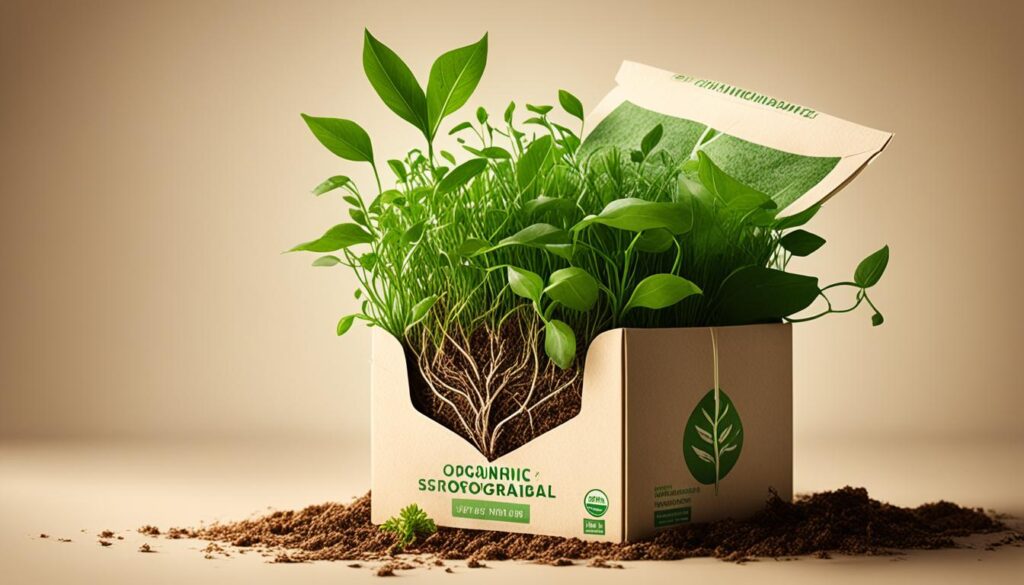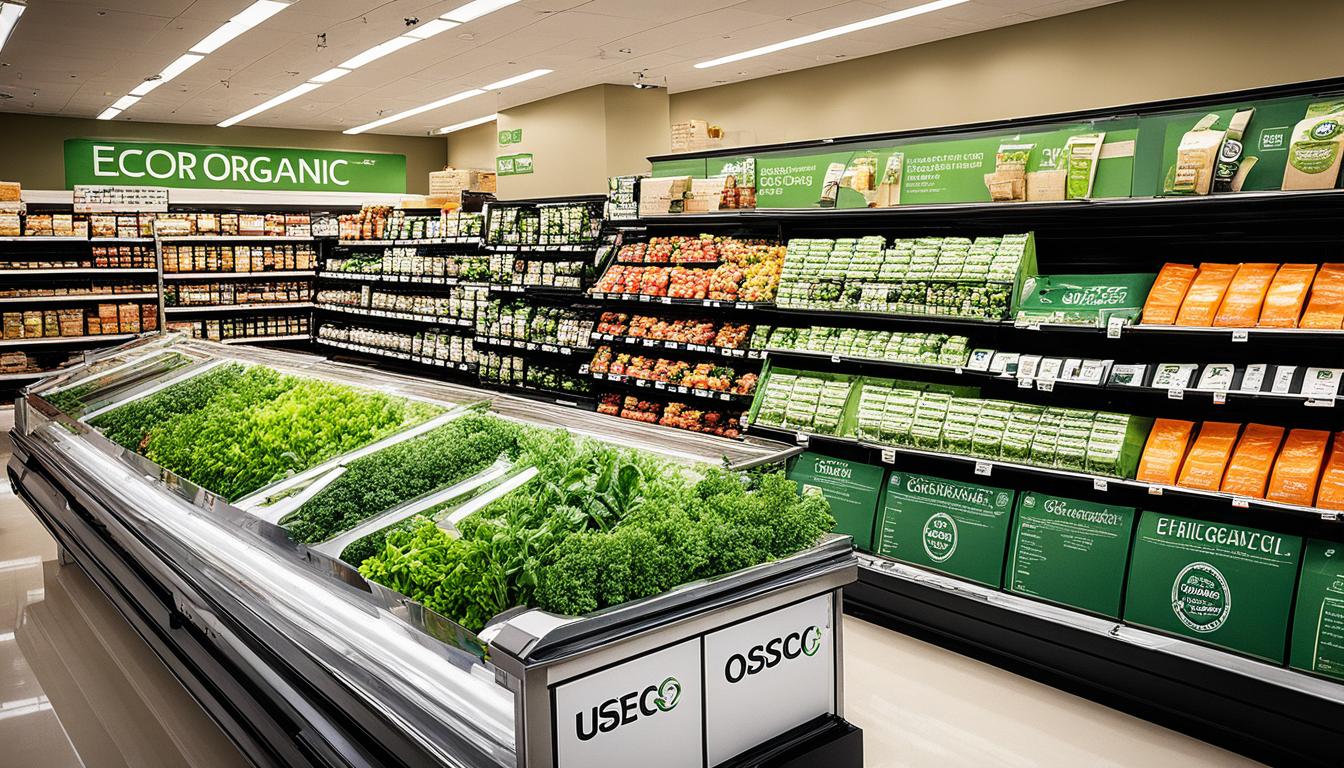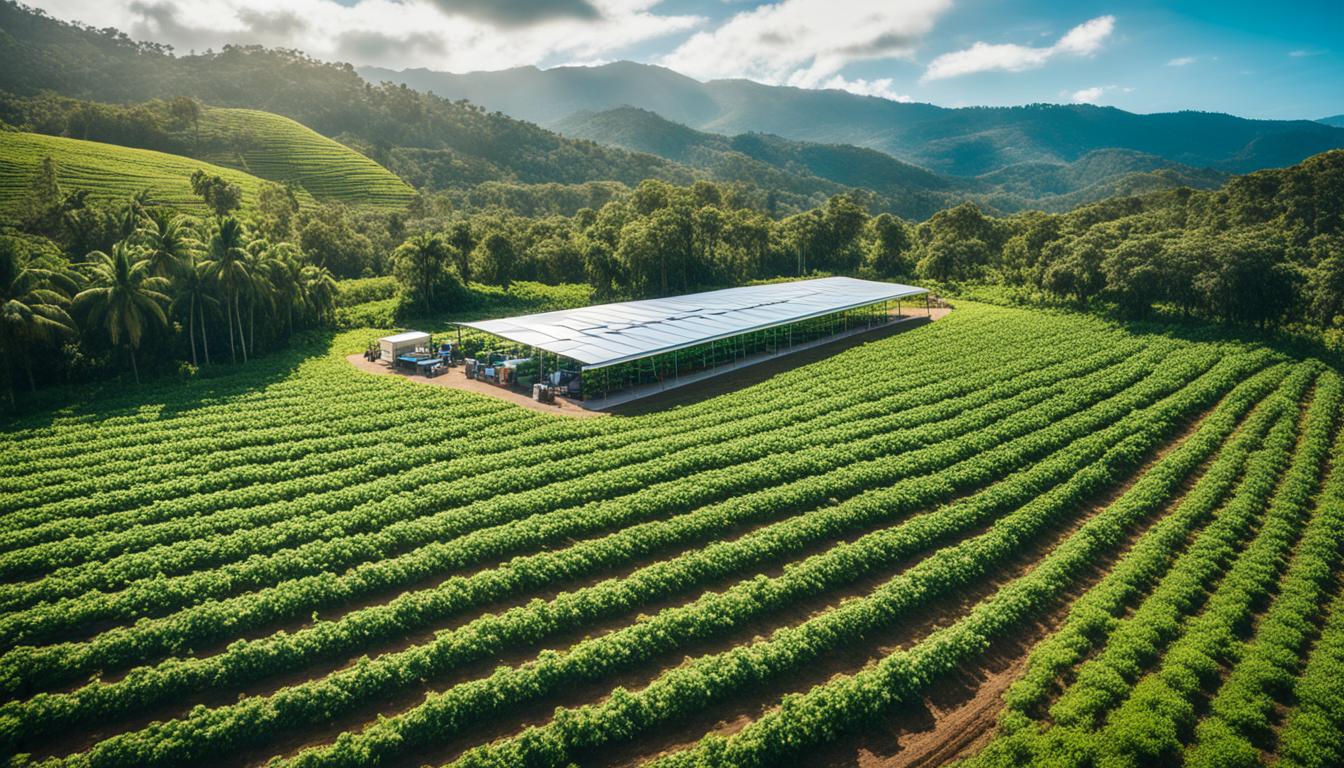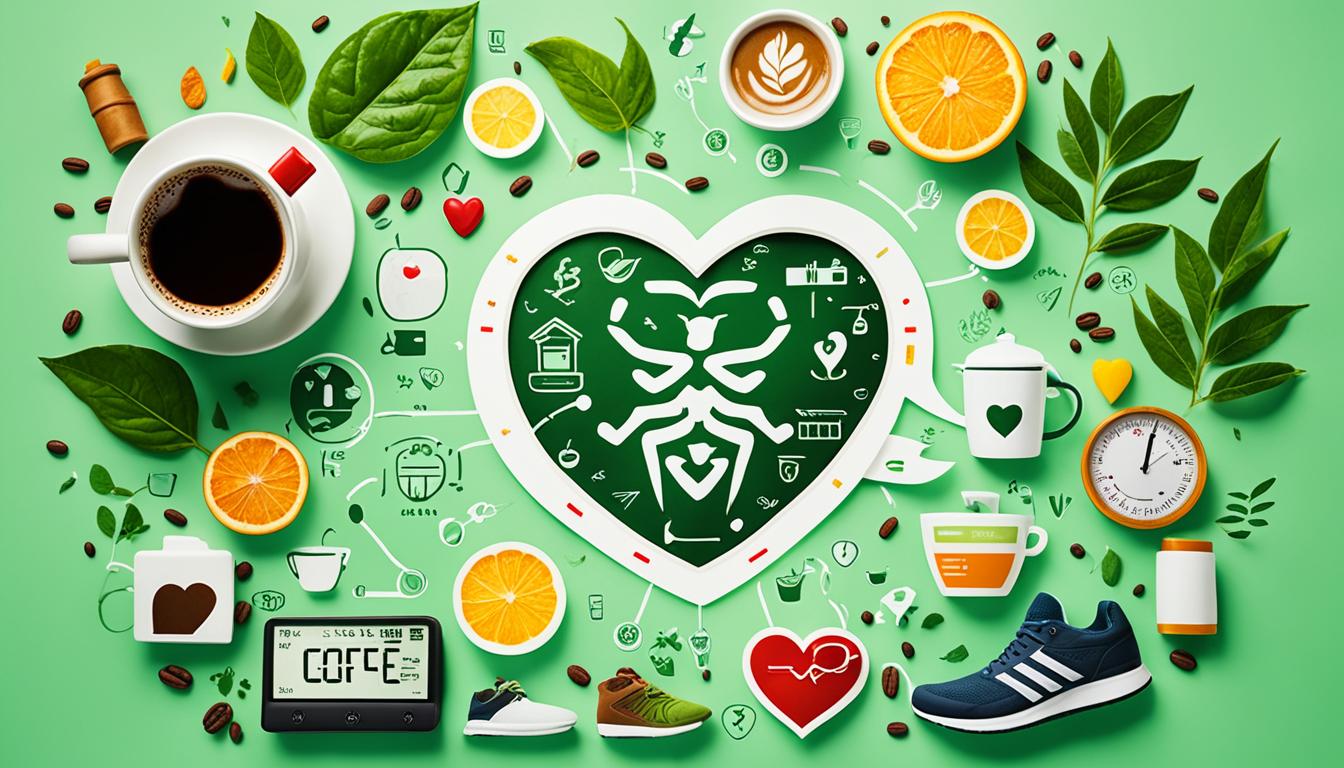The packaging industry is undergoing a significant transformation as consumer demand for sustainability grows stronger. Businesses are recognizing the importance of adopting eco-friendly packaging and practices to reduce their environmental impact and meet customer expectations.
Sustainable packaging solutions offer a range of environmentally friendly options for businesses. These include using recyclable materials, biodegradable alternatives, and packaging made from renewable resources. By embracing these eco-conscious packaging materials, companies can minimize waste and contribute to a greener future.
Alongside the environmental benefits, sustainable packaging practices also align with consumer values. More and more customers prioritize brands that prioritize sustainability. By implementing eco-friendly packaging solutions, businesses can attract a growing base of eco-conscious consumers and enhance their brand reputation.
Innovative design approaches play a crucial role in sustainable packaging. Minimalist packaging, for instance, focuses on simplicity and functionality, reducing unnecessary layers and waste. Smart packaging technologies, such as intelligent labels and QR codes, provide consumers with vital product information and promote recycling practices.
To ensure sustainability, optimizing the supply chain is essential. Collaboration with suppliers and a focus on sustainable logistics practices can significantly reduce the environmental impact of packaging. By streamlining packaging design and optimizing sizes and shapes, businesses can minimize transportation-related emissions and promote a greener future.
Eco-friendly packaging practices not only benefit the environment but also offer cost savings for businesses. By reducing material usage and improving operational efficiency, companies can achieve financial advantages while demonstrating their commitment to sustainability.
Key Takeaways:
- Eco-friendly packaging practices are essential for businesses aiming to meet sustainability goals and customer expectations.
- Using recyclable, biodegradable, and renewable materials in packaging helps reduce the environmental impact.
- Innovative design approaches, such as minimalist packaging and smart technologies, enhance sustainability and improve brand aesthetics.
- Collaboration and optimization of the supply chain promote eco-friendly practices and reduce packaging-related emissions.
- Choosing sustainable packaging options can lead to cost savings through reduced material usage and improved operational efficiency.
The Importance of Eco-Friendly Materials
When it comes to sustainable packaging solutions, the choice of materials plays a crucial role in reducing the environmental impact of packaging. Traditional materials like plastic and Styrofoam have long been associated with adverse effects on the environment. However, businesses are now embracing alternatives that are eco-friendly and offer a more sustainable approach.
By opting for recyclable materials such as recycled paper and cardboard, companies can significantly reduce their carbon footprint. These materials can be easily processed and reused, contributing to a circular economy where resources are reused rather than discarded. The use of biodegradable materials further enhances sustainability, as they break down naturally without leaving harmful residues behind.
Another eco-friendly option gaining popularity is the use of plant-based plastics and compostable materials. Plant-based plastics are derived from renewable resources like corn starch and sugarcane, making them a sustainable alternative to conventional plastic. Compostable materials, on the other hand, can be decomposed through industrial composting, contributing to nutrient-rich soil.
Embracing eco-friendly packaging materials not only helps reduce the environmental impact but also aligns with consumer values. Today, more and more customers prioritize sustainability when making purchasing decisions. By using recyclable, biodegradable, and plant-based materials, businesses can attract eco-conscious consumers who value a greener future.
“The shift to eco-friendly packaging materials is a win-win situation for businesses and the environment. It not only helps reduce waste and conserve resources but also meets the growing demand for sustainable products.” – Anna Green, Sustainability Expert
Advantages of Eco-Friendly Materials
- Reduced carbon footprint
- Promotion of circular economy
- Alignment with consumer values
- Attracting eco-conscious customers
- Positive brand image and reputation
Embracing eco-friendly packaging materials is a step towards creating a more sustainable future. Not only do these materials reduce waste and conserve resources, but they also contribute to a positive brand image and attract eco-conscious customers. By making the switch to recyclable, biodegradable, and plant-based materials, businesses can play their part in reducing environmental impact and building a greener economy.
Innovative Design Approaches for Sustainable Packaging
Sustainable packaging goes beyond the materials used; it also involves innovative design approaches. By incorporating minimalist packaging principles, businesses can create a more eco-friendly and aesthetically pleasing packaging solution. Minimalist packaging focuses on simplicity and functionality, eliminating unnecessary layers and reducing waste. This approach not only reduces the environmental impact but also enhances the overall brand aesthetic.
In addition to minimalist packaging, the integration of smart packaging technologies further enhances sustainability. Intelligent labels and QR codes provide consumers with access to essential product information, such as ingredients, certifications, and recycling instructions, promoting informed consumer choices. These technologies also facilitate recycling practices by guiding consumers on proper disposal methods.
“We believe that sustainable packaging should not only be environmentally friendly but also functional and engaging for consumers. By integrating intelligent labels and QR codes into our packaging, we empower our customers with valuable product information and encourage them to participate in recycling practices,” says Sarah Thompson, Sustainability Director at Green Earth Products.
Smart packaging technologies not only contribute to sustainable practices but also enhance the customer experience. By providing easy access to relevant product information, consumers feel empowered and confident in their purchasing decisions.
To visualize the impact of innovative design approaches in sustainable packaging, consider the following examples:
| Design Approach | Description | Benefits |
|---|---|---|
| Minimalist Packaging | Eliminates unnecessary layers and reduces waste | Reduces environmental impact Enhances brand aesthetic |
| Intelligent Labels and QR Codes | Provides access to product information and recycling instructions | Empowers consumers to make informed choices Promotes recycling practices |
By implementing these innovative design approaches, businesses can align their packaging with sustainable practices and consumer expectations. Not only does sustainable packaging contribute to a greener future, but it also enhances brand reputation and customer loyalty.

The Future of Sustainable Packaging
As technology continues to advance, the possibilities for innovative design approaches in sustainable packaging are expanding. Emerging trends, such as biodegradable materials, intelligent packaging systems, and customizable packaging solutions, are continually reshaping the industry. By embracing these advancements, businesses can stay at the forefront of sustainability, creating packaging that is both environmentally friendly and attractive to consumers.
The integration of intelligent packaging systems that provide real-time updates on product freshness and quality can minimize food and product waste. Customizable packaging solutions allow consumers to personalize their products while reducing excess materials. These advancements not only contribute to sustainability efforts but also cater to changing consumer preferences, ensuring long-term success in the market.
Sustainable packaging is no longer an option; it is an essential practice for businesses. Innovative design approaches pave the way for a greener future, one where packaging not only preserves the environment but also enhances the overall customer experience.
Optimizing the Supply Chain for Sustainability
Sustainable packaging goes beyond the final product—it encompasses the entire supply chain. Collaboration and transparency amongst suppliers, manufacturers, and logistics providers play a crucial role in identifying improvement opportunities and implementing eco-friendly practices. By optimizing the supply chain, businesses can significantly reduce the environmental impact of packaging and contribute to a greener future.
Streamlining packaging design and optimizing sizes and shapes are key steps towards reducing transportation-related emissions. By minimizing wasted space and adopting more efficient packaging solutions, companies can decrease the reliance on fossil fuels and lower carbon emissions during transportation.
Collaboration and Transparency
Collaboration and transparency are vital for driving sustainability goals forward in the packaging industry. By working closely with suppliers, manufacturers gain insights into sustainable materials, processes, and practices. This collaboration fosters innovation and allows for the development of more eco-friendly packaging solutions.
Local Sourcing and Long-term Sustainability
Businesses should consider local sourcing opportunities to minimize the environmental impact of transportation. By sourcing packaging materials and products from local suppliers, companies can reduce transportation distances, lowering carbon emissions and supporting local economies.
Furthermore, it is essential to avoid short-term solutions in favor of long-term sustainability. While quick fixes may seem appealing, they often contribute to greater environmental harm. By investing in sustainable logistics practices and long-term supply chain optimization, businesses can achieve lasting environmental benefits.
Packaging Design for Sustainability
Optimizing packaging design is another crucial aspect of creating a sustainable supply chain. By adopting design principles that minimize material usage and waste, companies can contribute to a more eco-friendly packaging industry. Additionally, considering end-of-life scenarios and incorporating recyclable or biodegradable materials helps reduce the environmental impact of packaging waste.
The integration of sustainability in the supply chain optimizes processes, reduces waste, and minimizes the use of non-renewable resources. Businesses that prioritize sustainable logistics practices not only contribute to a greener future but also enhance their brand reputation and attract eco-conscious consumers.
Conclusion
Sustainable packaging has rapidly evolved from a niche concept to a standard practice for businesses striving to uphold environmental responsibility and meet the demands of eco-conscious consumers. By prioritizing eco-friendly materials, embracing innovative design approaches, optimizing their supply chain, and recognizing the financial benefits of sustainable packaging, companies can significantly reduce their environmental impact, enhance their brand reputation, attract a growing base of conscious consumers, and achieve substantial cost savings.
The adoption of eco-friendly packaging practices is vital for minimizing the negative environmental impact of packaging materials. By opting for recyclable, biodegradable, and renewable resources in their packaging, businesses can contribute to the reduction of waste and carbon footprints, promoting a greener future. Moreover, sustainable packaging aligns with consumer values, enabling brands to connect with environmentally conscious individuals who actively seek out eco-friendly options.
Innovative design approaches play a significant role in sustainable packaging. Minimalist packaging designs that focus on simplicity and functionality help eliminate unnecessary waste, while smart packaging technologies, such as intelligent labels and QR codes, provide consumers with valuable product information and facilitate recycling efforts. These design practices not only promote sustainability but also enhance the overall brand aesthetic and improve the customer experience.
Optimizing the supply chain is key to achieving sustainability goals. Collaborating with suppliers, manufacturers, and logistics providers to promote transparency and implement eco-friendly practices ensures that sustainable packaging initiatives are integrated seamlessly. Critical steps include streamlining packaging designs to minimize transportation-related emissions, considering local sourcing opportunities, and avoiding short-term solutions to ensure long-term sustainability.
The shift towards eco-friendly packaging practices is driven by consumer demand for sustainable solutions. As consumers become more aware of the environmental impact of packaging, they actively seek out brands that prioritize sustainability. By embracing eco-friendly packaging and practices, businesses can forge a strong connection with these conscious consumers, enhance their brand reputation, and build a loyal customer base.
Ultimately, sustainable packaging is not only a responsible choice but also a strategic investment for businesses. By reducing the environmental impact of packaging materials, prioritizing eco-friendly design, and optimizing the supply chain, companies can achieve cost savings through reduced material usage and improved operational efficiency. Additionally, sustainable packaging helps businesses secure a competitive edge in the market by meeting the increasing consumer demand for environmentally friendly options.
FAQ
What is eco-friendly packaging?
Eco-friendly packaging refers to packaging materials and practices that have a reduced environmental impact. This includes the use of recyclable, biodegradable, or renewable resources, as well as innovative design approaches and supply chain optimization to promote sustainability.
Why is eco-friendly packaging important?
Eco-friendly packaging is important because it helps businesses reduce their environmental footprint and align with consumer values. It attracts eco-conscious customers, enhances brand reputation, and can lead to cost savings through improved operational efficiency and reduced material usage.
What are some eco-friendly packaging materials?
Eco-friendly packaging materials include recycled paper, cardboard, plant-based plastics, and compostable materials. These alternatives to traditional materials like plastic and Styrofoam promote a circular economy by closing the loop through recycling and composting processes.
What are innovative design approaches for sustainable packaging?
Innovative design approaches for sustainable packaging include minimalist packaging, which focuses on simplicity and functionality to reduce waste. Smart packaging technologies like intelligent labels and QR codes provide product information and promote recycling practices.
How can businesses optimize the supply chain for sustainability?
Businesses can optimize the supply chain for sustainability by collaborating with suppliers, manufacturers, and logistics providers. This includes streamlining packaging design, optimizing sizes and shapes to minimize transportation-related emissions, and considering local sourcing opportunities.




